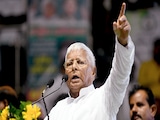The US Justice Department deliberately fuelled UFO conspiracy theories, including those centred around Area 51, to conceal Cold War-era military projects, a new report has revealed.
Area 51, a classified US Air Force facility in the Nevada desert, has long been the subject of rumours suggesting the government hid aliens, crashed spacecraft and extraterrestrial technology there.
A Department of Defence review, reported by The Wall Street Journal, found that in the 1980s, an Air Force colonel was sent on a mission to spread false information. He visited a bar near Area 51 and gave the owner fake photos of flying saucers, which sparked new UFO rumours around the already secretive military base.
The now-retired colonel later confessed to Pentagon investigators that the mission aimed to divert attention from the real purpose of the site: testing the then-secret F-117 Nighthawk stealth aircraft.
Officials believed embedding the programme within alien folklore was the best way to shield it from Soviet surveillance during the Cold War.
US defence agencies allegedly leaned into UFO myths multiple times to safeguard sensitive military developments.
Sean Kirkpatrick, appointed in 2022 as the first director of the All-domain Anomaly Resolution Office (AARO), was tasked with reviewing decades of military reports on unexplained aerial phenomena. His investigation uncovered several instances where UFO conspiracies appeared to originate within the Pentagon itself.
One such case involved an internal Air Force prank called "Yankee Blue," in which new recruits were briefed on a fictitious unit investigating alien aircraft. They were ordered never to discuss the content, with many unaware the entire scenario was fabricated. This practice reportedly continued until the Pentagon issued a directive to stop it in 2023.
Mr Kirkpatrick's review also revisited a well-known 1967 incident involving former Air Force captain Robert Salas, who claimed he saw a UFO disable ten nuclear missiles at a Montana base. Mr Salas said he was ordered to remain silent about the event.
AARO's findings, however, suggest the phenomenon was likely the result of a failed electromagnetic pulse (EMP) test meant to assess the base's resilience to nuclear interference, a test Mr Salas and others were never briefed on.















